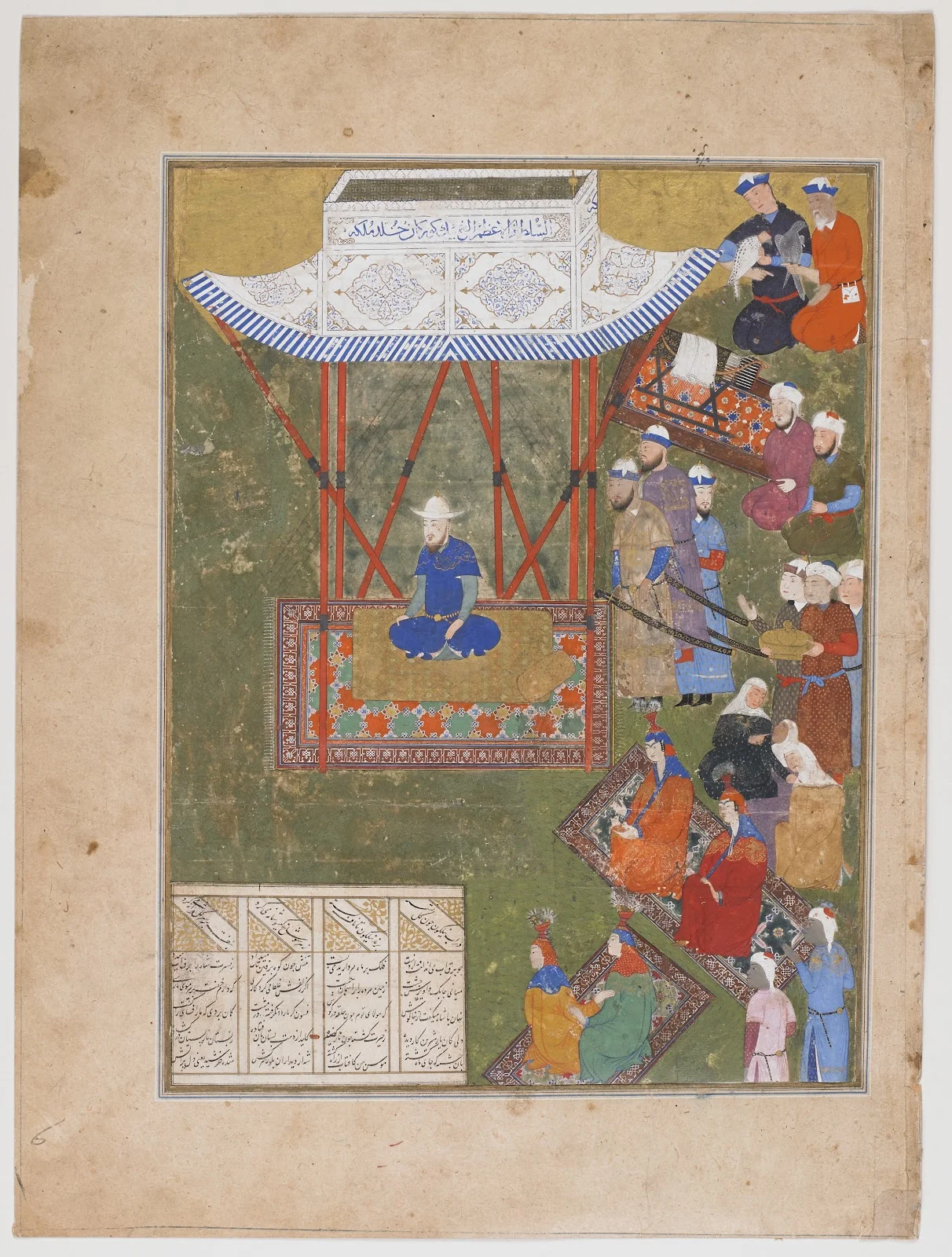Modern science is typically portrayed as a series of discoveries and achievements that come from Western traditions, even though many of these ideas were developed much earlier in other parts of the world. For instance, long before Nicolaus Copernicus, often credited with formulating the heliocentric model, Persian, Arab, and Indian scholars had already proposed alternative theories that challenged the dominant worldview of a stationary Earth with the sun revolving around it.
During the Middle Ages, Central Asia played a prominent role in the exploration of the cosmos. On the occasion of Science Day in Kazakhstan, Qalam takes a closer look at the remarkable scientific work of Ulugh Beg—and the conditions that made it possible.
Who Was Ulugh Beg?
Ulugh Beg, the eldest son of the future ruler of the Timurid Empire, Shahrukh, and grandson of Amir Timur, was born in 1394 in Sultaniyya during one of his grandfather’s campaigns into northern Iran. At the age of just four years, he accompanied Timur on an expedition to Kabul, which later culminated in the capture of Delhi. Not long after, the young prince found himself on another military campaign—this time westward, where in 1402, Timur’s army defeated the Ottoman sultan Bayezid I near Ankara.
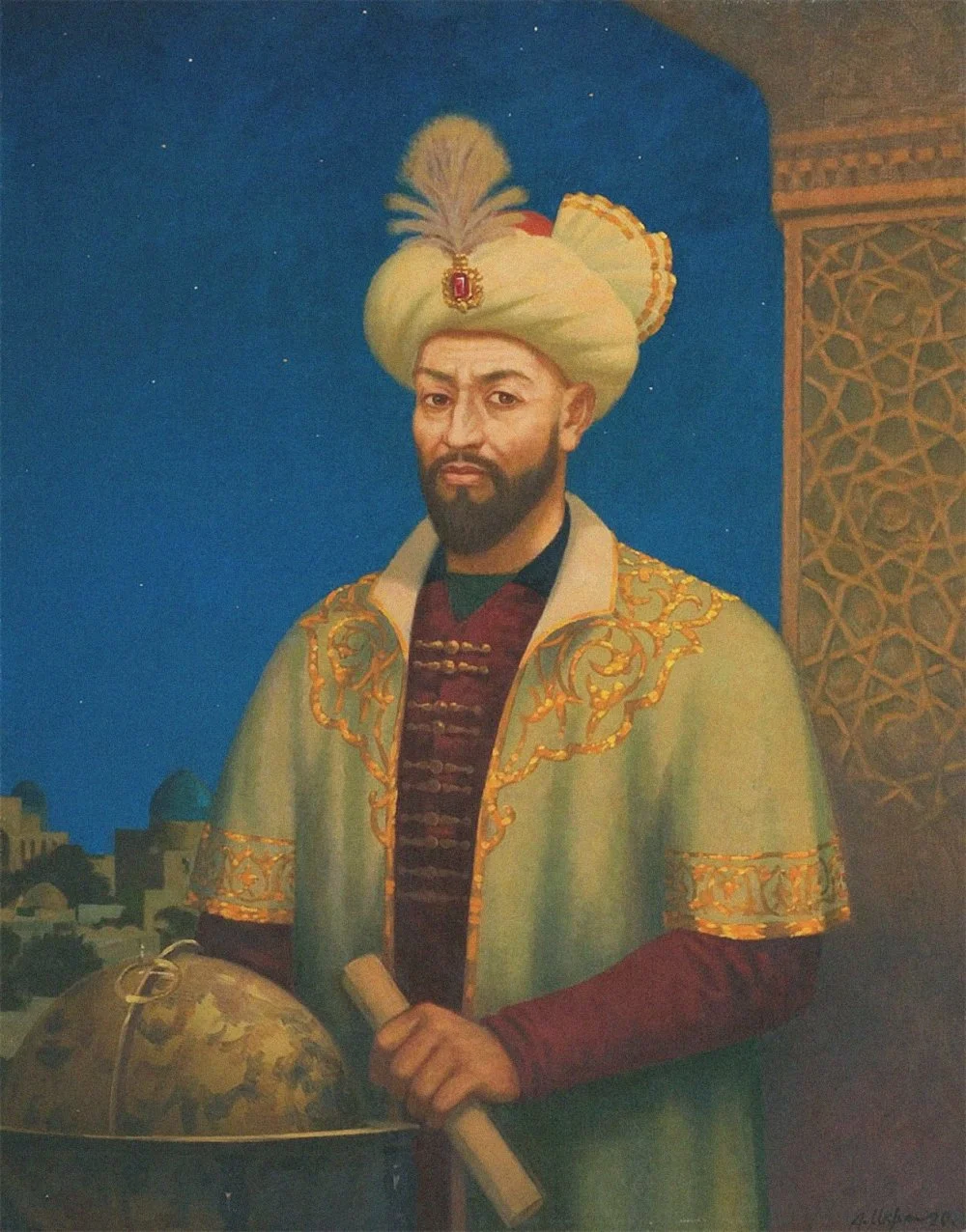
Ulugh Beg in the Observatory. Ulugh Beg Museum, Samarkand. Modern illustration / Alamy
Before Timur’s planned campaign into China, he arranged ceremonial weddings for his grandsons. When he was just ten years old, Ulugh Beg not only got married but was also formally appointed as the governor of part of Moghulistan, a region encompassing the Tian Shan Mountains and the northwestern part of modern-day Xinjiang. These lands, however, still had to be conquered. Ulugh Beg was likely the young nobleman seen by the Spanish envoy Ruy González de Clavijo, who visited Timur’s court between 1403 and 1404.
After Amir Timur’s death in 1405, his ambitious plans, including the campaign to China, remained unfulfilled. The empire descended into a power struggle, and the young Ulugh Beg was drawn into it. When Shahrukh managed to reassert control over Mawarannahr (also known as Transoxiana), he appointed his son as governor of the region. From 1411 onward, Ulugh Beg effectively ruled Samarkand, remaining subordinate to his father, who governed the empire from Herat. It was only after Shahrukh’s death in 1447 that Ulugh Beg gained supreme power but only briefly. By 1449, he was overthrown and executed.

15th-century Persian manuscript depicting Nasir al-Din al-Tusi's observatory in Maragha / Google Arts and Culture
Although he was no stranger to military success—his exploits include his temporary control over part of Moghulistan, including Kashgar, in the mid-1420s—Ulugh Beg was increasingly drawn to science and the patronage of the arts. Between 1417 and 1420, he built the famous madrasa on Registan Square—a building that remains, to this day, a symbol of his intellectual legacy.
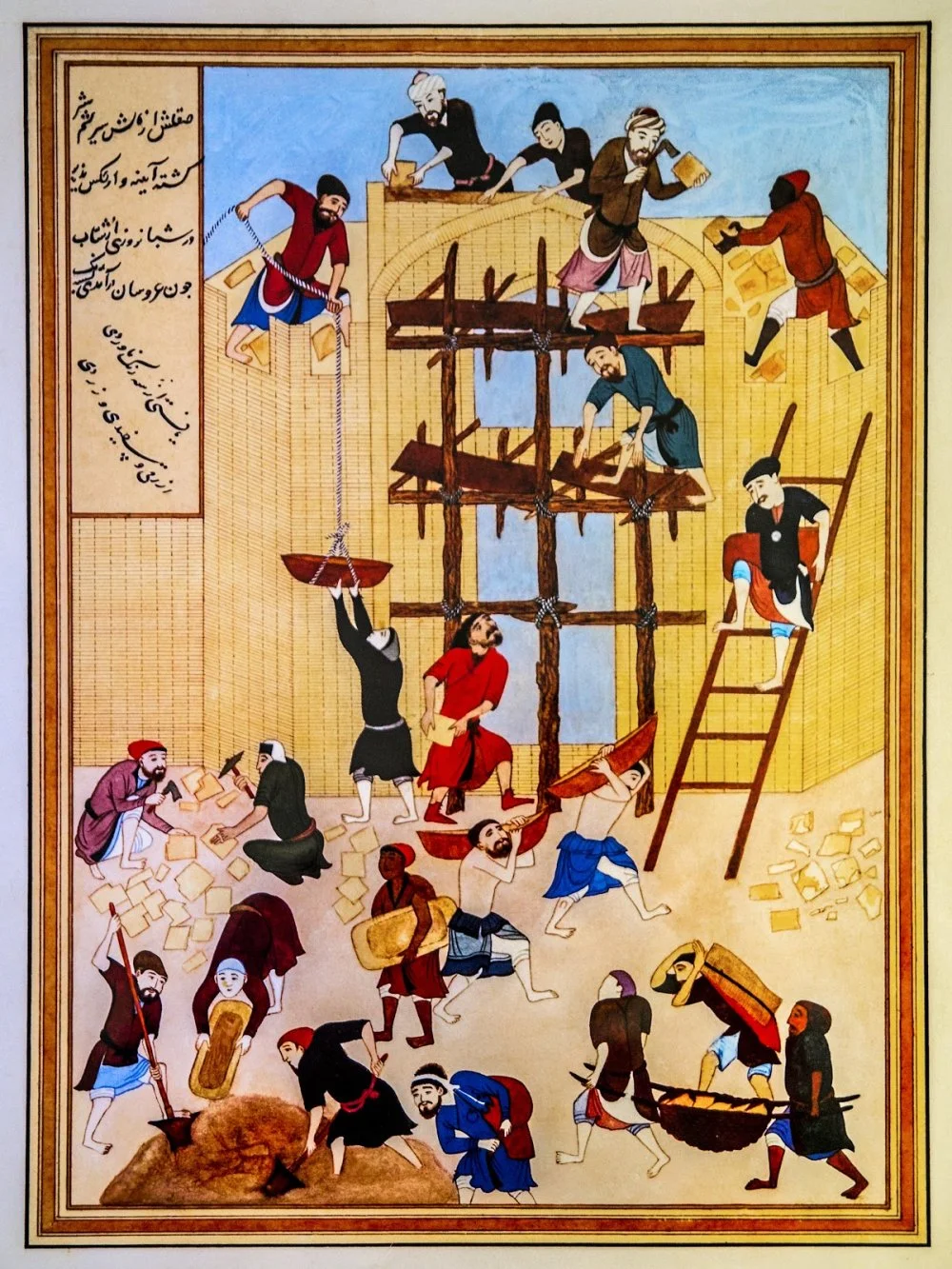
Miniature painting of the construction of a madrasa. Ulugh Beg Observatory Museum, Samarkand /Getty Images.
The Bearer of Tradition
Most historical sources do not clearly explain when or under whose influence Ulugh Beg developed his interest in science. It is unlikely that this interest stemmed from his upbringing at the court of his grandmother Saray Mulk Khanum or under the influence of his grandfather Timur. Nor does it seem probable that any scientific pursuits were possible under the guardianship of Emir Shah Malik. In his childhood and youth, Ulugh Beg likely did not stand out among other members of the Timurid dynasty. It appears that his interest in science emerged after he was appointed ruler of Mawarannahr.
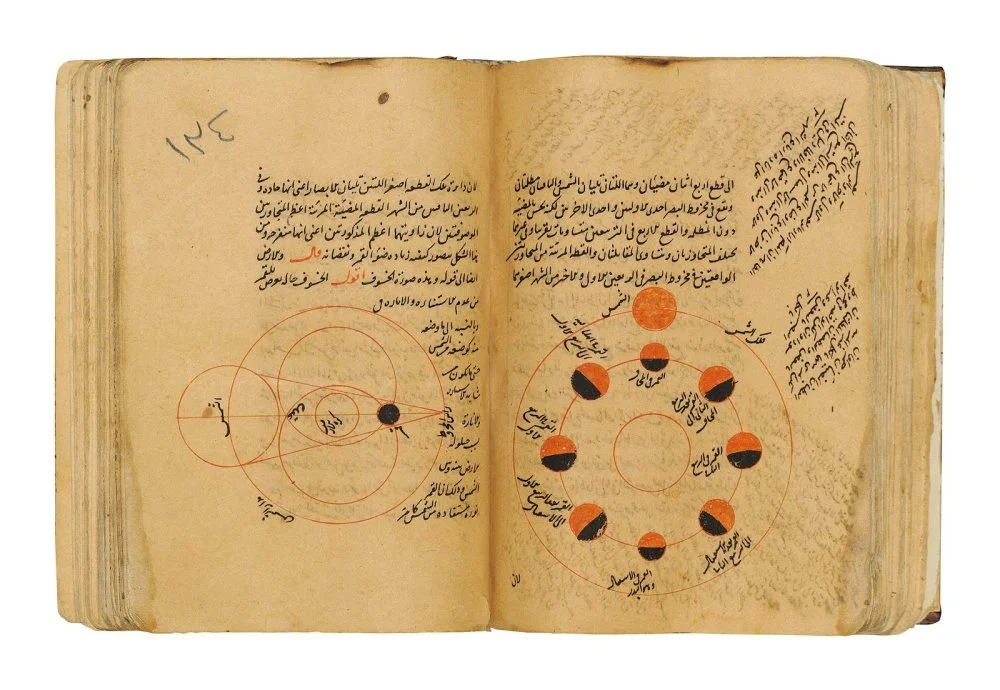
Nizam al-Din Hasan bin Husayn Qumi Nishapuri. Commentary on Tusi’s (approximately 1247 year.)Memoir on Astronomy (al-Tadhkirah fi 'ilm al-hay'a). December 1490. Timurid Iran / Christie’s
It is possible that he was influenced by various Persian cultural figures whom Timur had relocated to Samarkand, some of whom were still living there during Ulugh Beg’s time. The city was then home to the historian Hafizi Abru, who wrote a remarkable work on the history of Central Asia, the renowned physician Mavlono Nafis, and poets such as Siraj al-Din Samarkandi, Sakkaki, Lutfi, Badhakhshi, and others. Of course, we must mention Ghiyath al-Din Jamshid, the astronomer and mathematician who compiled zijes, or astronomical tables, that undoubtedly influenced Ulugh Beg.
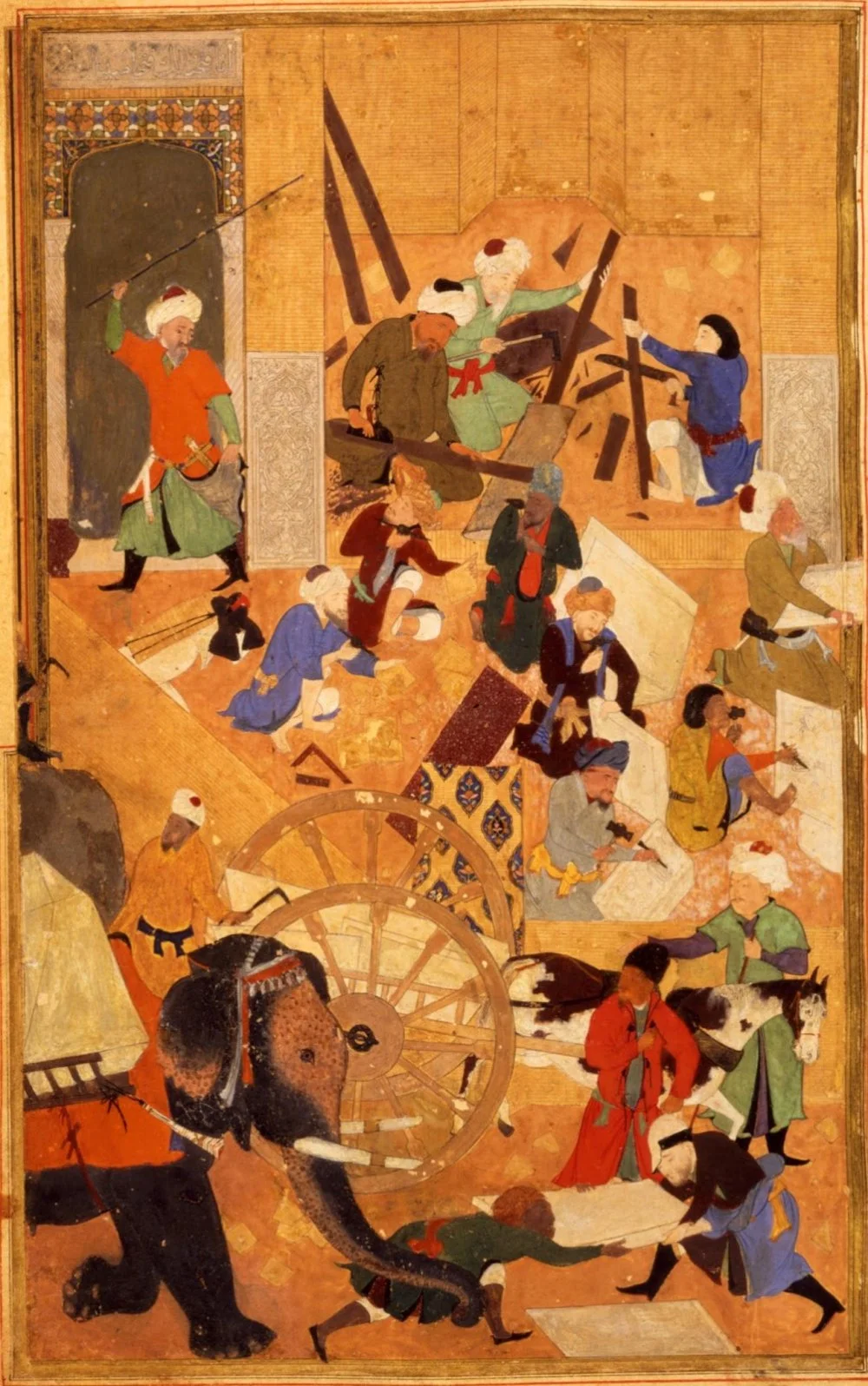
Bihzad. Timurid miniature in the Zafarnama of Sultan Husayn (or Garrett Zafarnama). 1467–1468, illumination ca. 1480s. Construction of the Great Mosque of Samarkand / John Work Garrett Library, Johns Hopkins University
Although Ulugh Beg was undoubtedly a brilliant mind, he was also a product of his time, shaped and supported by a vast scientific tradition. Still, for his insatiable pursuit of knowledge, he is often called one of the last bright stars of the Islamic Golden Age, though not everyone agrees with this view. It is no coincidence that the gates of the Bukhara Madrasa, which was built by Ulugh Beg, were inscribed with this hadith:
‘The pursuit of knowledge is a duty for every Muslim man and woman.’
Indeed, the support of science, especially the exact sciences, was an important part of state policy in the medieval Muslim world. In the ninth century, Caliph al-Ma'mun founded the Bayt al-Hikma (House of Wisdom) in Baghdad, a center for translation and research where the greatest minds of the time worked.
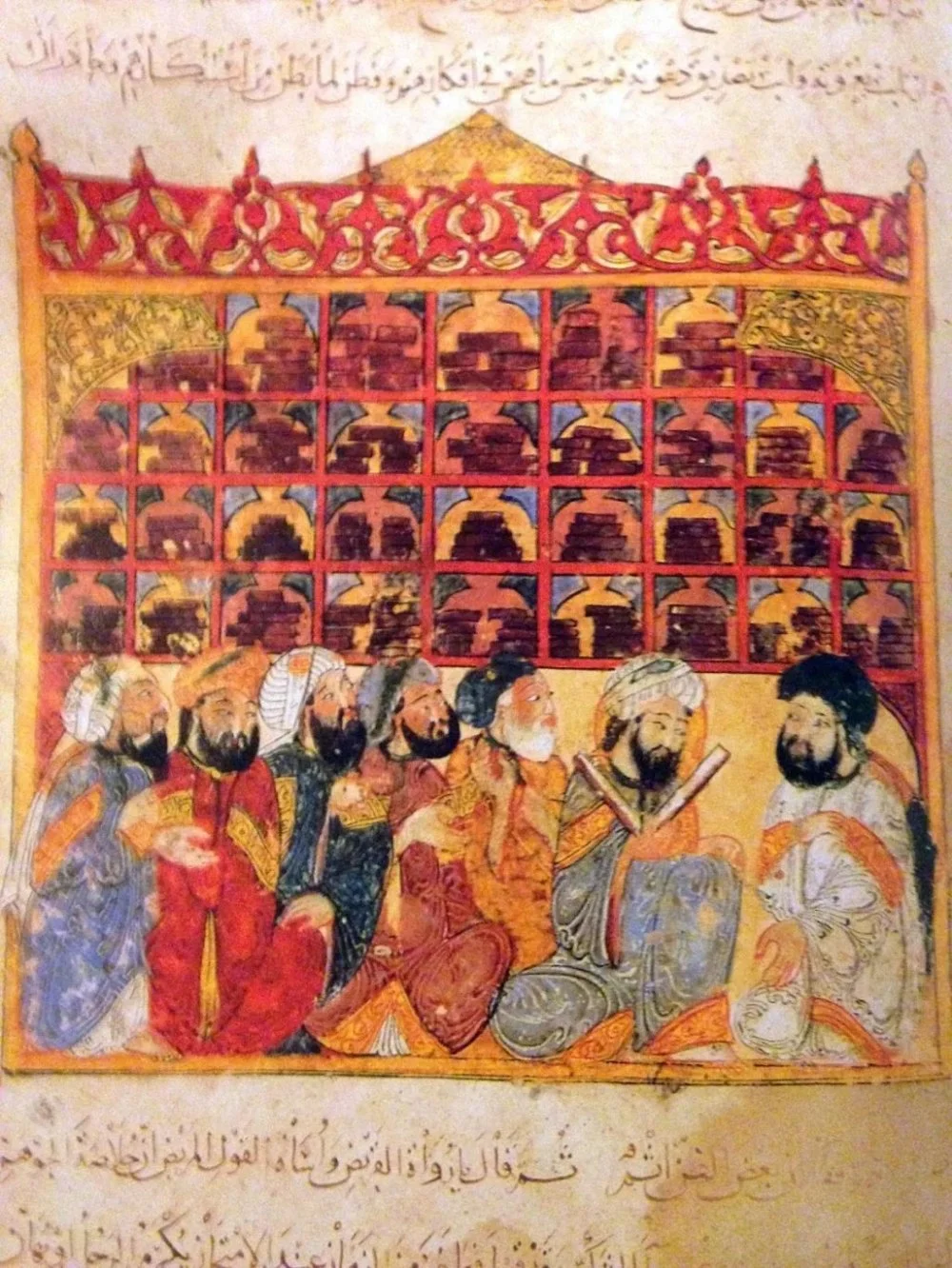
The House of Wisdom in Baghdad, an academy founded in the 9th century by Caliph Al-Ma’mun / Alamy
There, Muhammad ibn Musa al-Khwarizmi laid down the foundational principles of algebra and his name, Latinized as ‘Algoritmi’, is the origin of the word ‘algorithm’. Ibn al-Haytham discovered the laws of optics and described the principle of the camera obscura six centuries before the Europeans. Others, like the Banu Musa brothers, designed intricate water-powered automata and authored works on mechanics, and Thabit ibn Qurra made significant contributions to geometry and developed theories of motion. In fact, many scientific terms we still use today—algebra, algorithm, azimuth, zenith, and almanac, among them—entered European languages through Arabic. Notably, many of the brightest minds of the Baghdad scientific center actually came from Central Asia. In this rich intellectual tradition, Ulugh Beg exemplified the scientific heritage of his region.
Nonetheless, the Muslim scientific tradition was part of a broader global exchange of knowledge. It was built in part on the foundations laid by the works of ancient Greek scholars such as Socrates, Plato, Aristotle, and Ptolemy, translations of whose works were often carried out by Syriac Christians. The source of the original Greek texts was Byzantium, which had carefully preserved the classical legacy. It was from Constantinople that Caliph al-Ma'mun acquired some incredibly valuable manuscripts.
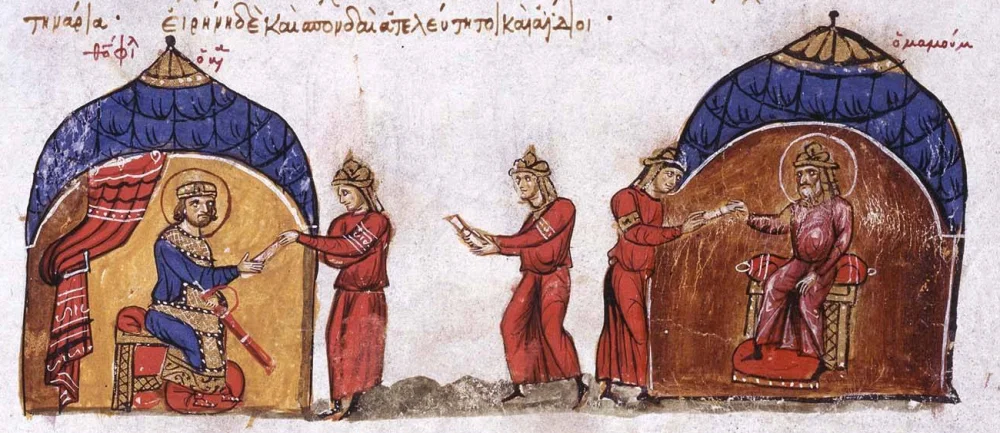
Abbasid Caliph al-Mamun sends an envoy to Byzantine Emperor Theophilos. 13th century / Library of Congress
In addition to Greco-Byzantine works, texts from China and India also flowed into Baghdad. And after the ninth century, Islamic science did not become insular—nearly all prominent scholars of the Muslim world were multilingual (in addition to Arabic, they typically knew Persian, Greek, and Syriac). And in this respect, Ulugh Beg was no exception.
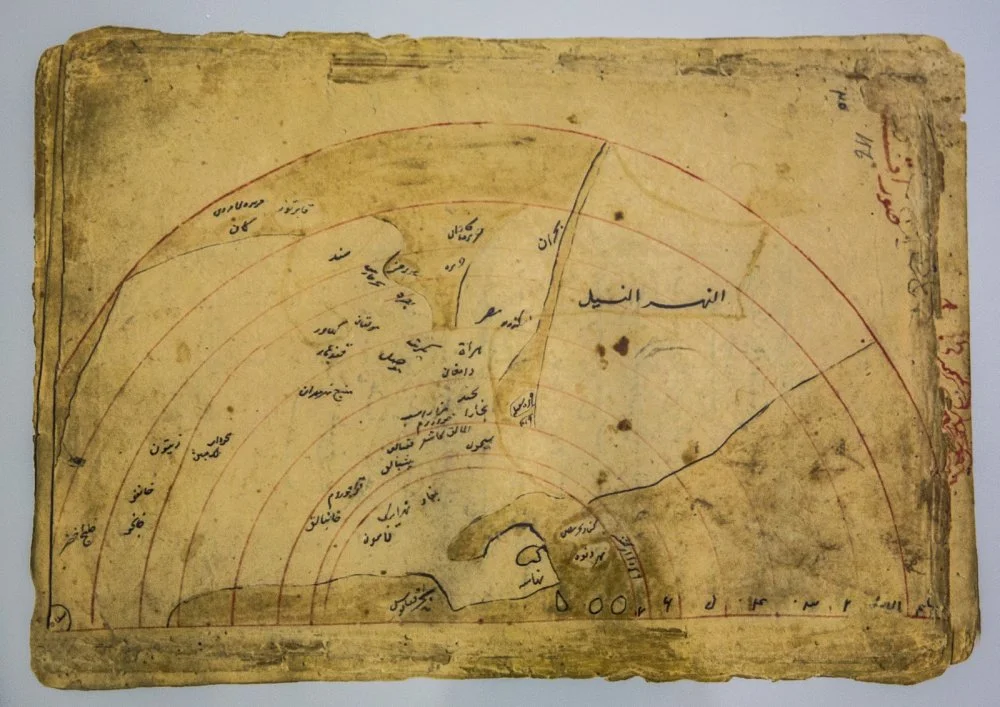
Geographical map probably compiled by Ulugh Beg. From the 1605 manuscript Tazkirat al-Shu‘ara by historian Mutribi Samarqandi, preserved at the Institute of Oriental Studies, Uzbekistan Academy of Sciences / Getty Images
Ulugh Beg’s Astronomy
Ulugh Beg began the construction of the Samarkand Observatory around 1420 on Kuhak Hill in the north of the city, and it was the largest astronomical structure of its time. It was a three-storey circular building, with its main instrument being a giant sextant integrated into the building's structure: one half of the arc was embedded in a trench on the hillside, while the other half rose above the surface. The arc had a radius of approximately 40 meters, allowing for astronomical measurements of exceptional precision. The arc's surface was lined with marble and marked with degree divisions along which sighting devices could be moved. Additional tools were used to track celestial bodies' movement, including sundials and astrolabes.
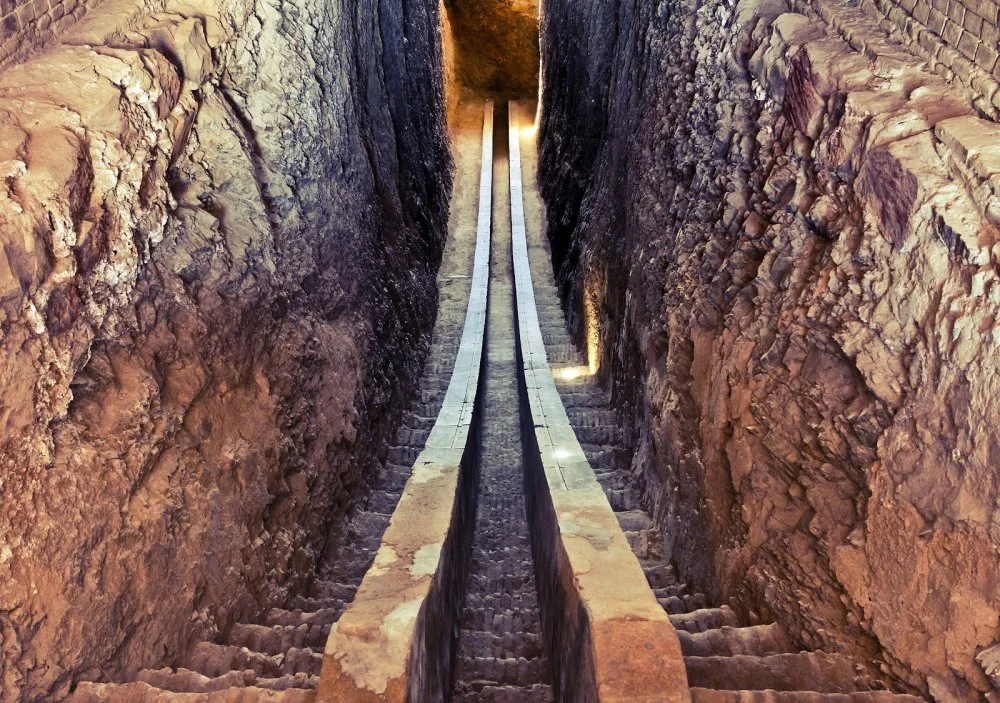
Remaining part of the quadrant (or sextant) of Ulugh Beg's observatory underground. Samarkand, Uzbekistan, 1420s / Alamy
Ulugh Beg’s interest in astronomy was no coincidence. For Muslims, astronomy held not only theoretical but practical everyday significance as well. It was essential to accurately determine the times of prayer, the direction of Mecca (qiblah), the beginning and end of fasting during the holy month of Ramadan, and for creating calendars based on lunar and solar cycles. These practical needs spurred the development of observational astronomy, the refinement of instruments, and the improvement of astronomical tables.
For generations, zijes were compiled regularly by astronomers and always included sections on planar and spherical trigonometry.
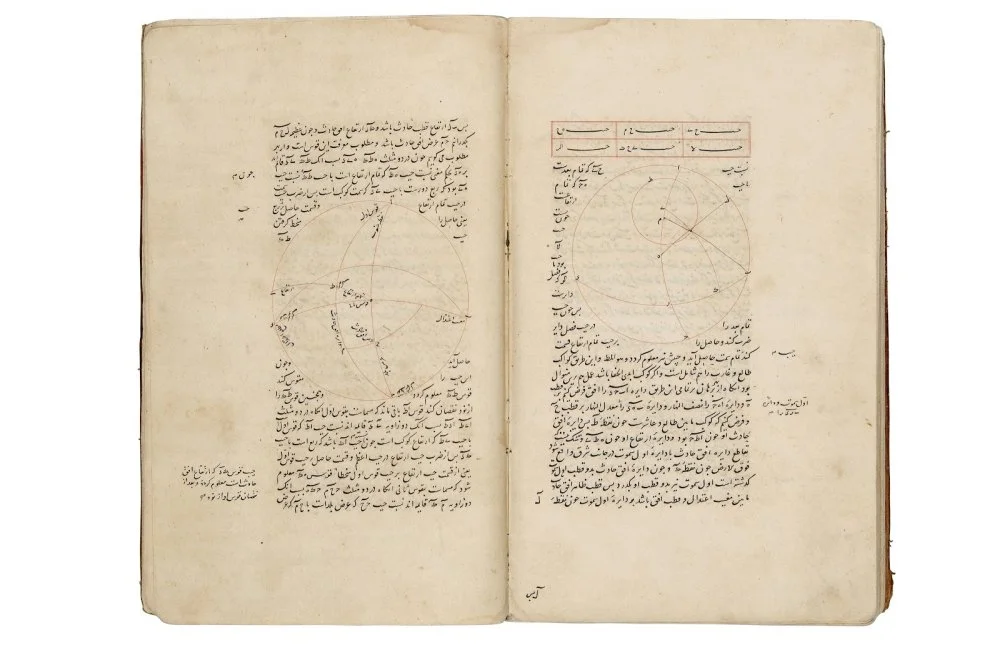
Nizam al-Din al-Naysaburi. A page from the commentary on Nasir al-Din al-Tusi’s Zij-i Ilkhani. Timurid Iran, November 1432 / Christies
Alongside tables of trigonometric functions, they presented the fundamental relationships between these functions. For this reason, zijes also served as trigonometry textbooks. In fact, Ulugh Beg’s mentor was the Samarkand astronomer and mathematician Ghiyath al-Din Jamshid ibn Masud al-Kashi (typically known al-Kashi). His Khaqani Zij (1414) had a significant influence on Ulugh Beg’s research.
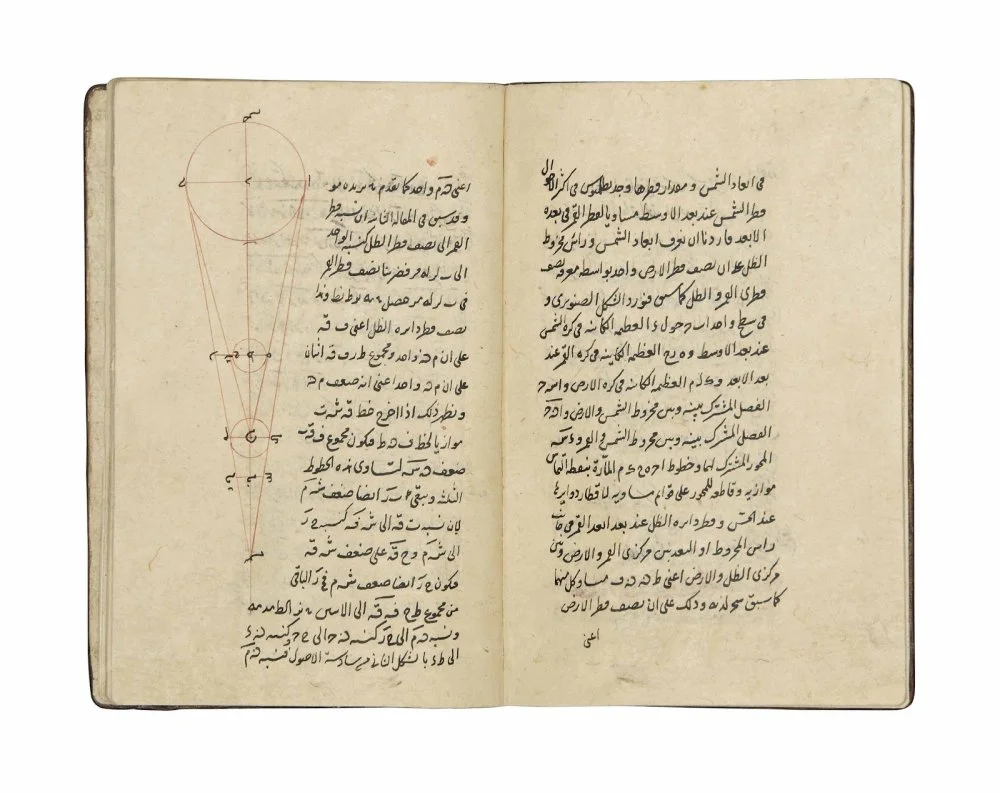
Manuscript of al-Kashi's al-Risala al-Kamaliya. Copy created in Safavid Iran, dated 26 June 1520 / Christies
Astrology, despite debates about how permissible it was to practice, also played a notable role in political and medical practice: rulers’ horoscopes were drawn based on the stars, auspicious dates were selected for battles, weddings, and construction projects, and astrological guidance was sought for treating illnesses. Thus, both disciplines—astronomy and astrology—were deeply embedded in Muslim society's religious, administrative, and daily life.
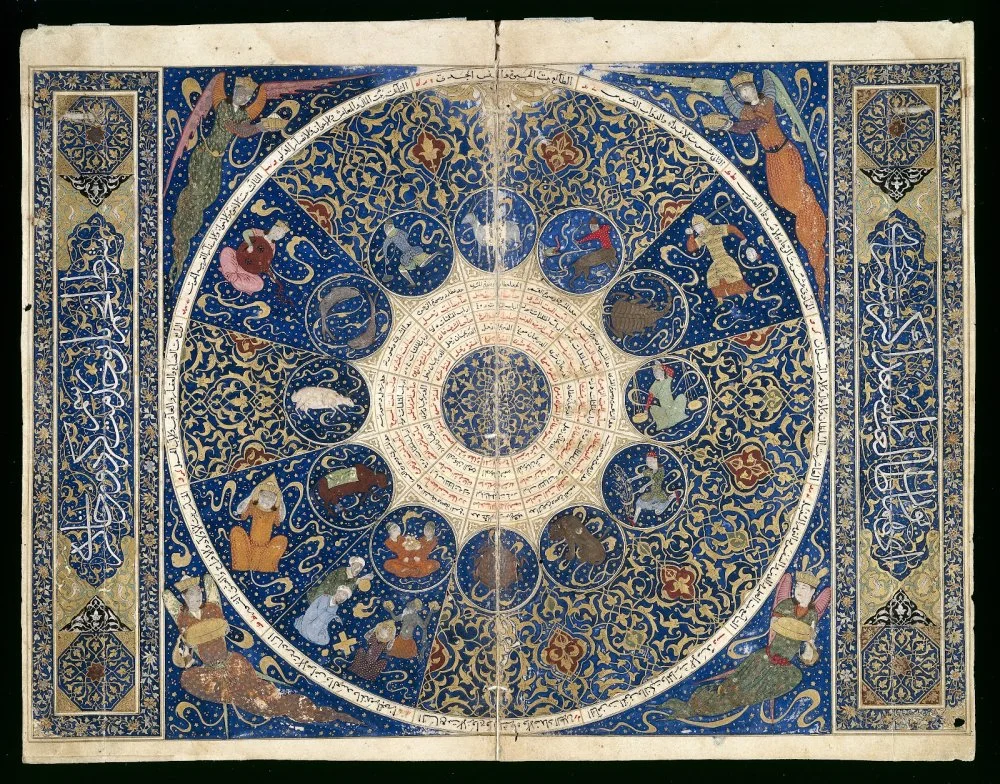
Horoscope from the Book of the Birth of Iskandar. 25 April 1384. Timurid Dynasty / Wellcome Images
Mongol influence also played a role here. Much like in Islamic tradition, stargazing and following horoscopes were integral parts of daily spiritual practice. In the thirteenth century, the heirs of Chinggis Khan established astronomical research centers across the vast Mongol Empire. Kublai Khan, the Great Khan’s grandson and founder of the Yuan dynasty, built an observatory in his capital Khanbaliq (modern-day Beijing), where both local and Muslim scientists worked, including the distinguished astronomer al-Bukhari. It is believed that al-Bukhari brought the first astronomical instruments to Kublai Khan’s laboratory in 1267, including a Persian astrolabe, a globe, and an armillary sphere.
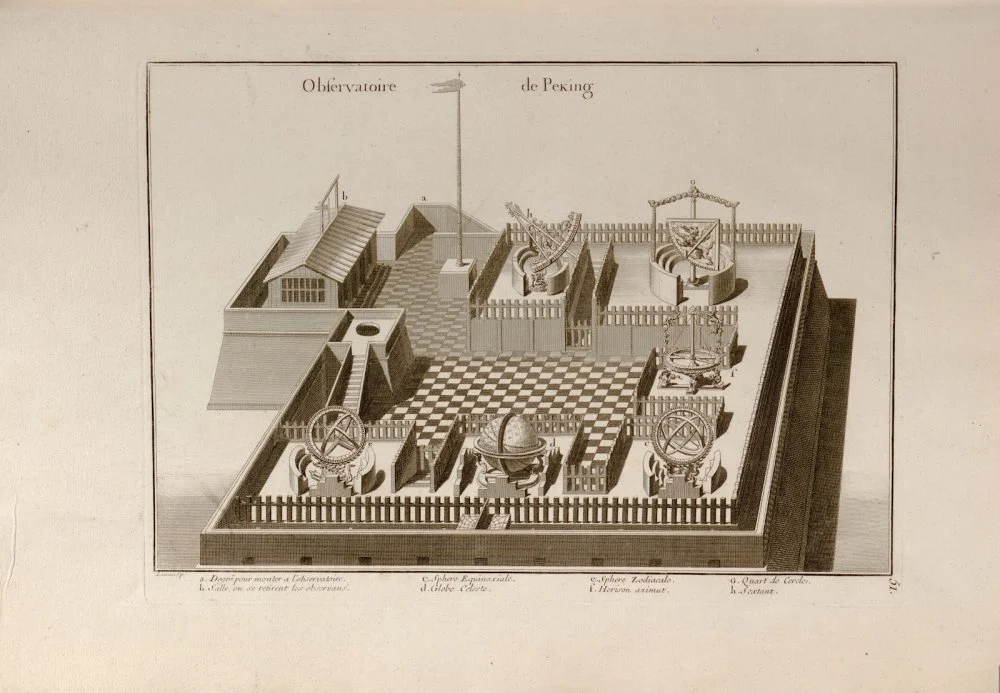
Observatory of Peking. Between 1697 and 1782 / Library of Congress
Meanwhile, in the Ilkhanate, the Mongol state in Iran, Kublai’s uncle Hulagu founded the Maragha Observatory under the direction of Nasir al-Din al-Tusi, the most prominent scientific institution in the Islamic world at the time. It is believed that Ulugh Beg may have visited the ruins of this great observatory in Maragha during his childhood. Whether true or not, the legacy of al-Tusi was undoubtedly passed on to Ulugh Beg through the works of al-Kashi.
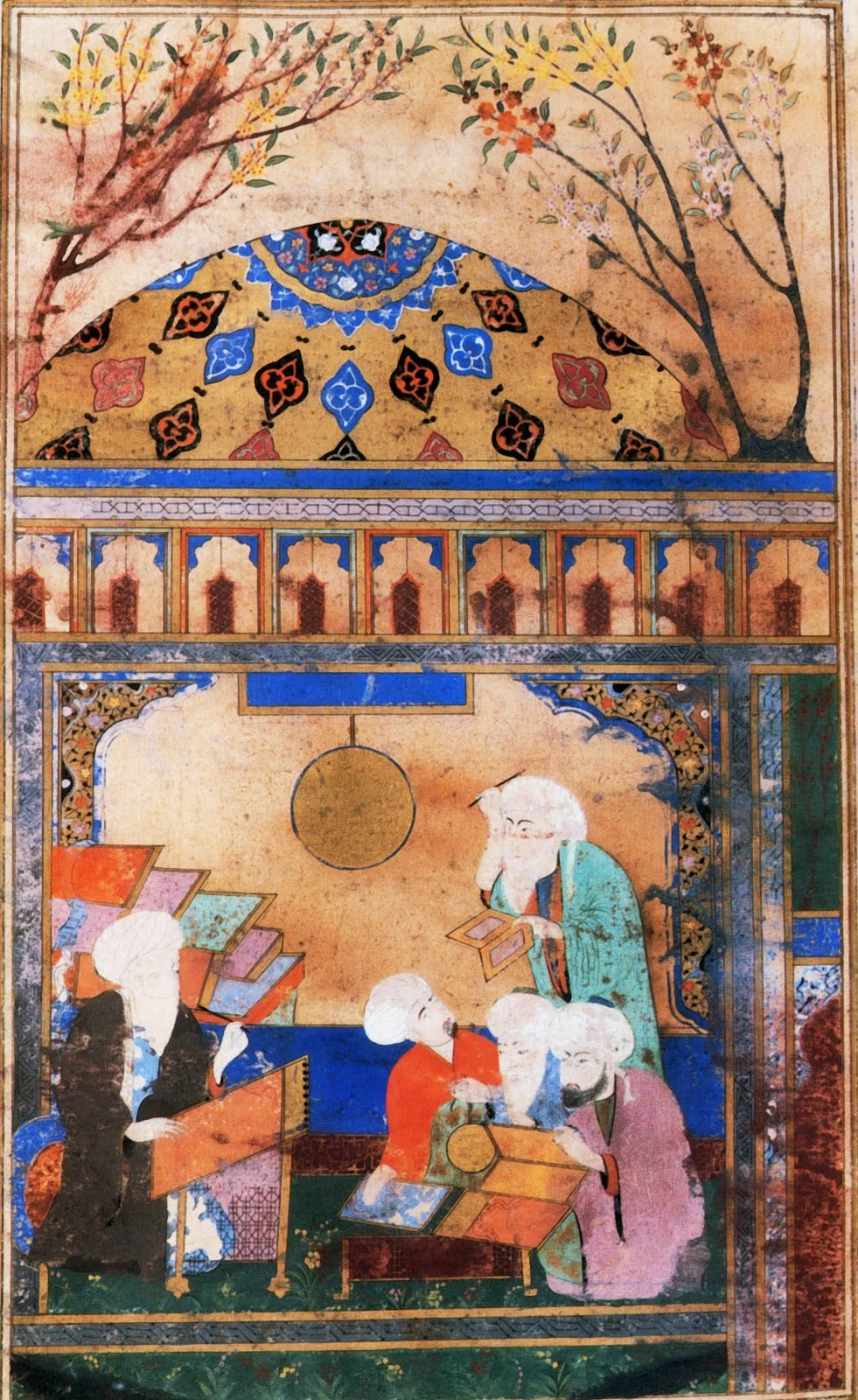
Persian astronomer and astrologer Nasir al-Din al-Tusi at his writing desk at the high-tech observatory in Maragha, Persia, instructing pupils. Mid 13th century / Alamy
The Samarkand Project
Under Ulugh Beg's leadership, Samarkand flourished as a prominent center of science and learning. Notably, Jamshid al-Kashi played a pivotal role in calibrating instruments at the observatory and served as its inaugural director. Working with him was Qadi Zada al-Rumi, originally from the Ottoman city of Bursa; and together, they co-authored works with Ulugh Beg. A full-fledged research institute required both a library and a place to teach. While the library has not survived, the madrasa on Registan Square functioned as a university and still stands today as a testament to his commitment to knowledge and learning. It's important to note that only a few names of the scholars from Ulugh Beg's scientific center have been preserved, yet contemporary accounts suggest that hundreds contributed to its endeavors.
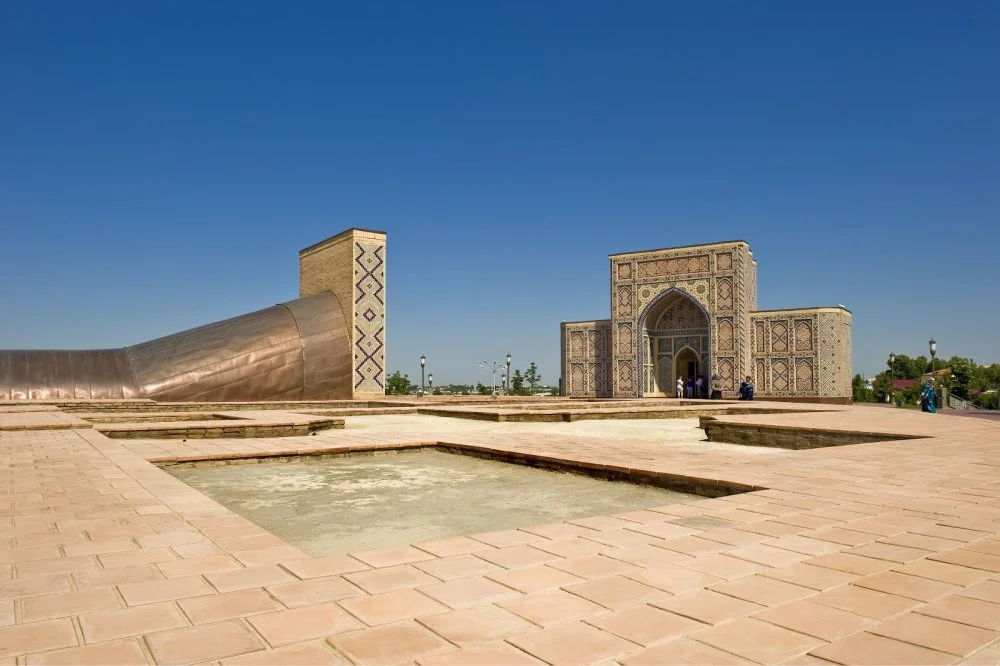
Ulugh Beg's Observatory. Uzbekistan, Samarkand / Giovanni Mereghetti / UCG / Universal Images Group via Getty Images
The result of this grand project was Ulugh Beg’s Zij, known as the Guragānī Zij. The Zij listed 1,018 stars grouped into 38 constellations. It also recorded the length of the sidereal year as 365 days, 6 hours, 10 minutes, and 8 seconds—with an error of only +58 seconds—and the Earth’s axial tilt as 23.52 degrees, one of the most accurate measurements of its time. For a long time, this Zij remained the most advanced and accurate astronomical work available. It wasn’t until the sixteenth century that new works, such as those by al-Shami and Tycho Brahe, appeared and surpassed it in detail and precision.
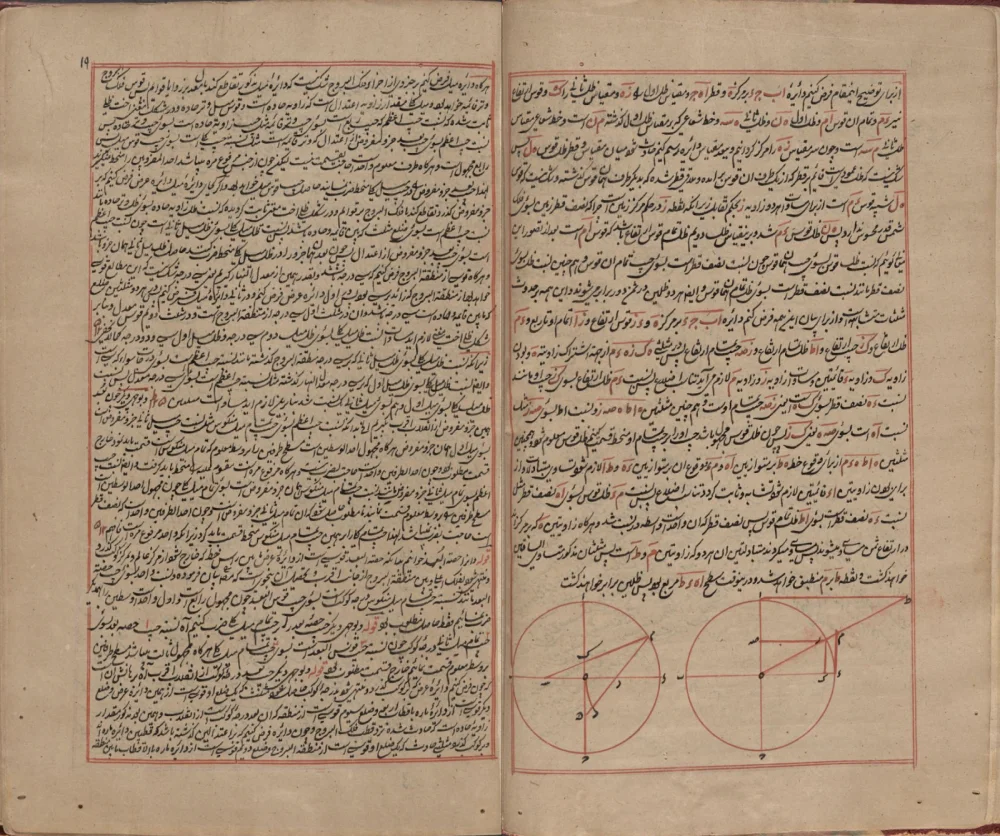
Pages of Gurgan zij /archive.org
The intellectual atmosphere of Samarkand at the time is reflected in a letter from al-Kashi to his father. In it, he writes about the astrological problems he and his colleagues were working on, about the structure of the observatory and its flat roof, a distinct advantage for placing instruments, making mention of the constant influx of students from other regions arriving in Samarkand as well. Interestingly, Al-Kashi noted that the observatory also engaged in the study of music and poetry and that Ulugh Beg himself occasionally delivered lectures.
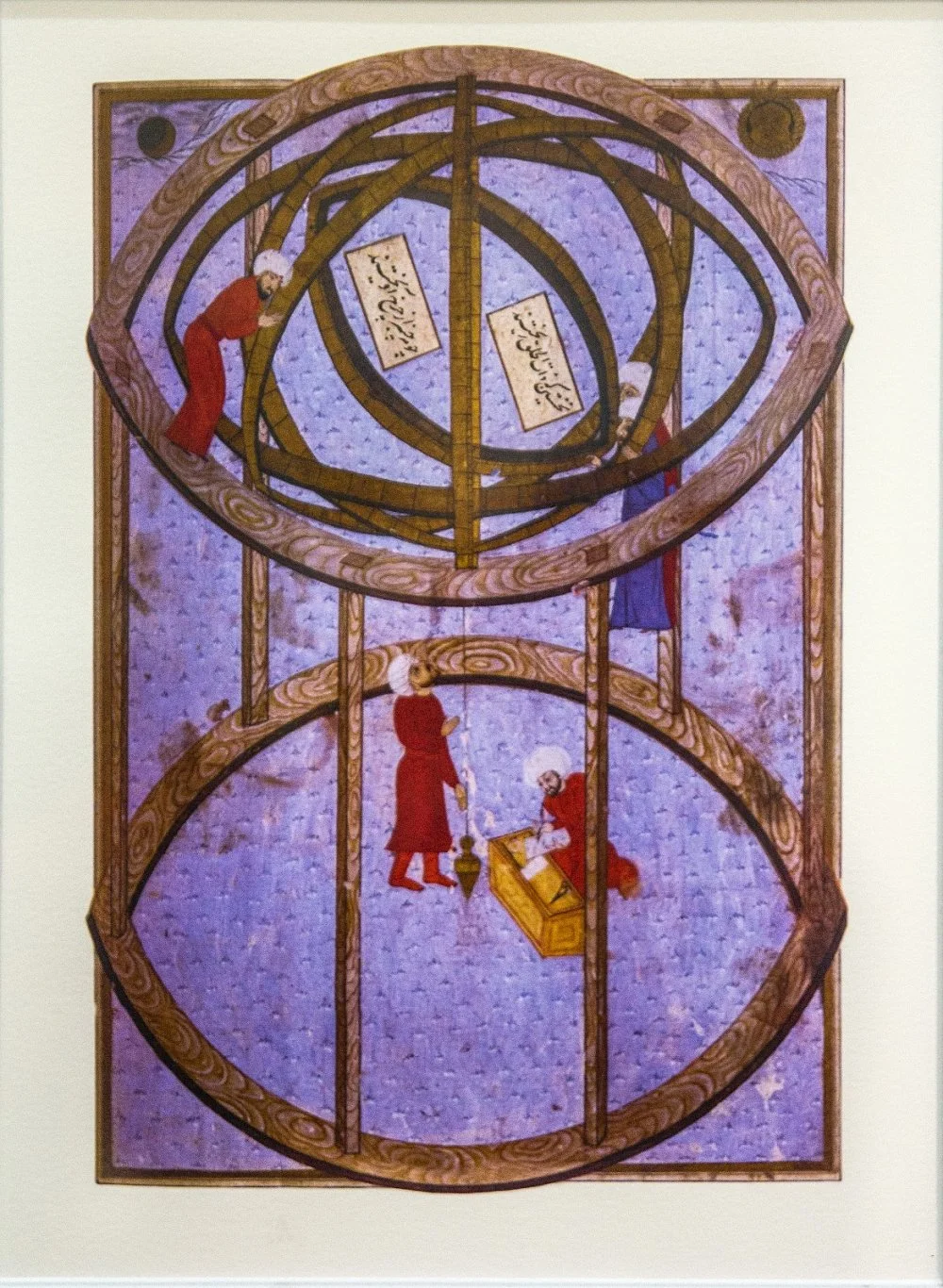
Ulugh Beg Observatory. Samarkand, Uzbekistan / Alamy
Legacy
Ulugh Beg’s scientific legacy extended far beyond Samarkand. His Zij was republished many times and used at the courts of other Timurid descendants, notably in the Mughal Empire in India. There, astrology had been elevated to a ritual status, which made Ulugh Beg’s astronomical calculations and those of other Muslim scholars essential and widely relied on.
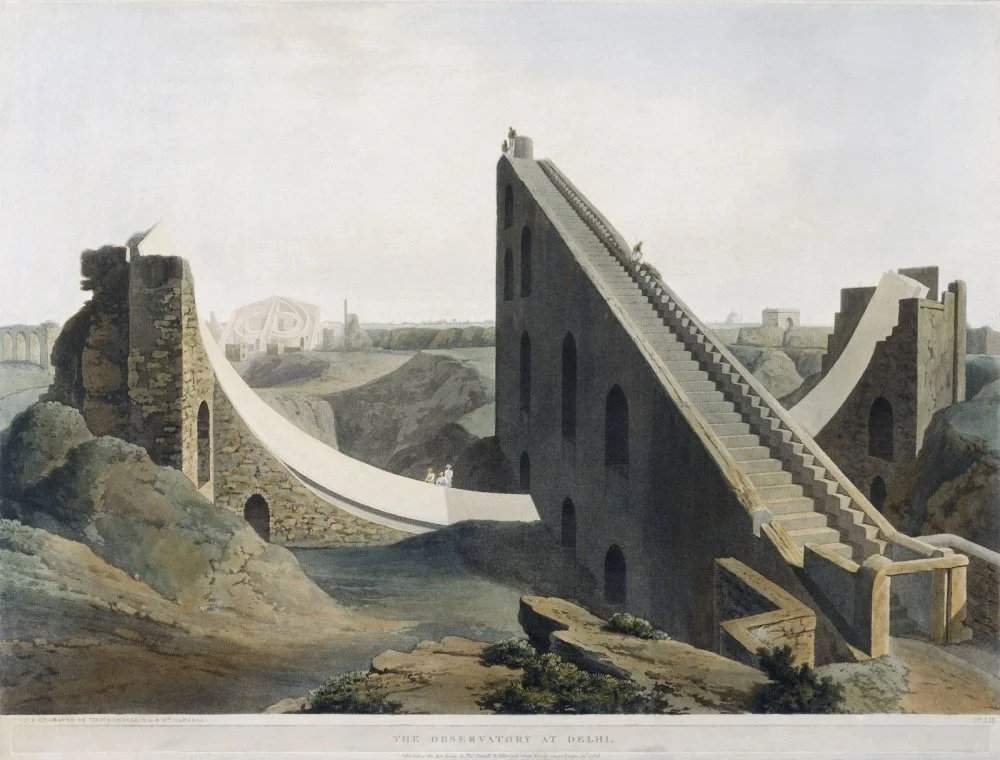
Samrat Yantra sundial, part of the Delhi Observatory. India, Delhi, circa 1808 / SSPL/Getty Images
His legacy is best embodied in the life of Ali al-Qushji, his student and the director of the observatory. A brilliant representative of the Samarkand school of science, al-Qushji was born in 1403 into the family of a court falconer and was educated in a madrasa founded by Ulugh Beg. Showing an early interest in science, he mastered the astrolabe and studied Persian treatises on planetary motion. Eager to apply his knowledge practically, he traveled to the Gulf of Oman to study the relationship between the moon and tides and wrote his first treatise on the phases of the moon. Since the lunar calendar was a crucial part of Islamic tradition, such research was especially valued.
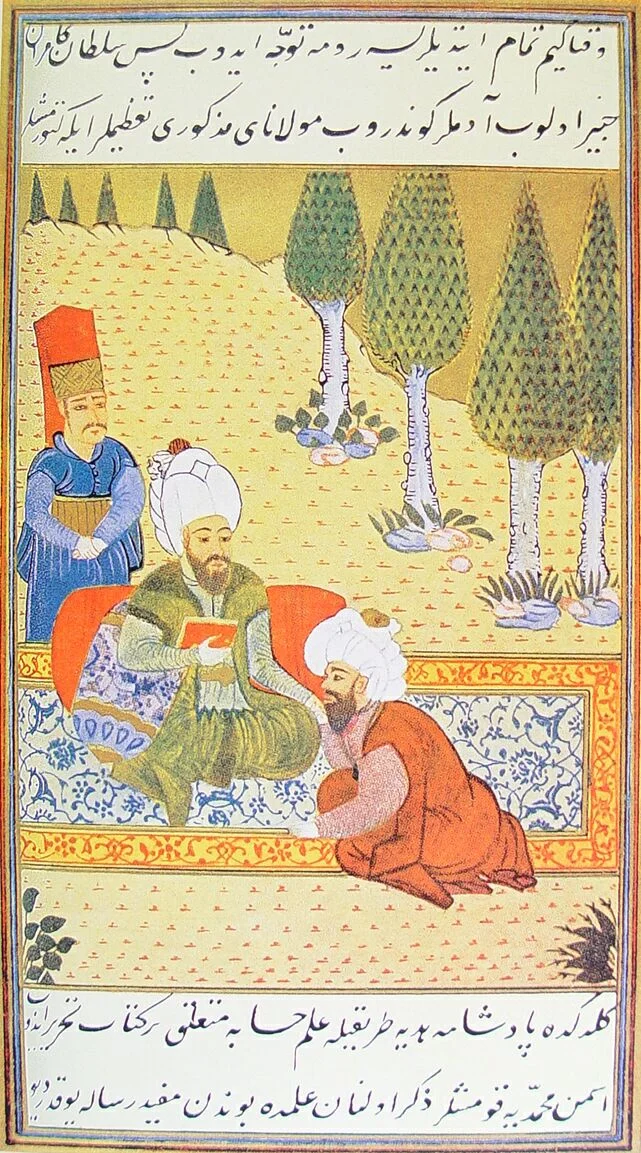
Fatih Sultan Mehmed II and Ali Qushji. Mehmed II Fatih album. Circa 16th Century. Topkapi Palace Museum Library / Sabancı Digital Gallery
When Ulugh Beg learned of the young scholar’s work, he invited him to Samarkand to participate in the observatory’s activities. After Ulugh Beg’s death in 1449, al-Qushji left the Timurid Empire and wandered through Central Asia in search of a new patron. He only arrived in the Ottoman capital in 1471. Aware of the Samarkand scientific tradition, Sultan Mehmed II invited al-Qushji to join his court and appointed him to teach mathematics in a newly established madrasa.
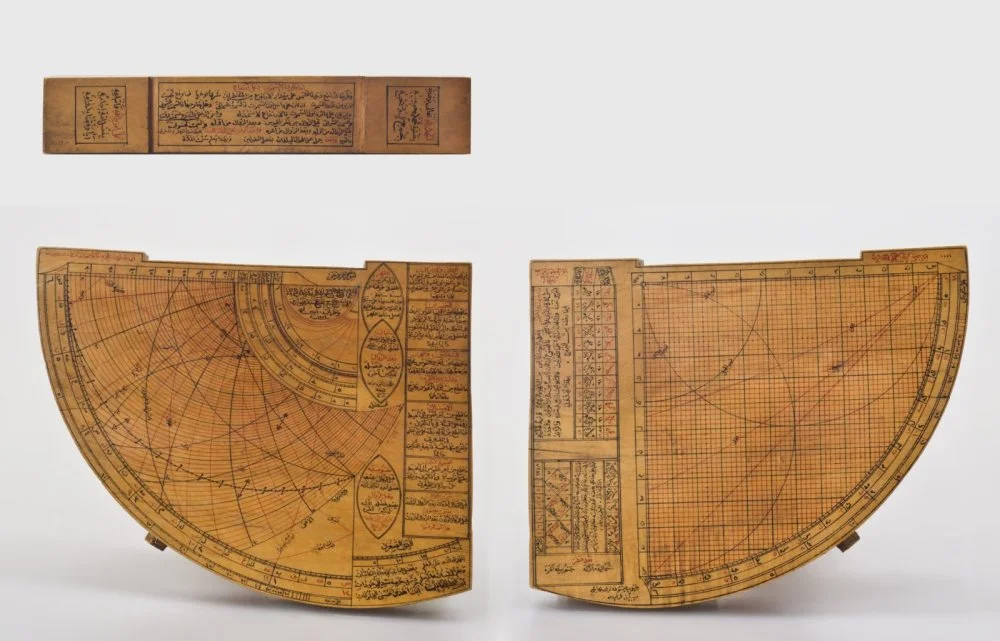
Astrolabe-quadrant. Dated 1840–41 AD. Ottoman Turkey / Khalili Foundation
A few decades after al-Qushji’s death, Istanbul would become a new center of astronomy. The founder of its observatory, Taqi al-Din al-Shami, was inspired to study the stars after meeting al-Qushji’s grandson. In 1574, under the patronage of Sultan Murad III, he became the head of the largest observatory of his time, though it would remain in operation for only a few years.

Ottoman astronomers at work around Taqī al-Dīn at the Istanbul Observatory. Istanbul University Library, F 1404, fol. 57a (Ṣehinṣename, Book of the King of Kings)//Wikimedia Commons
Al-Qushji’s works eventually became known to European astronomers through the Ottoman Empire. For instance, the German astronomer Regiomontanus used al-Qushji’s manuscripts in his research. In turn, Regiomontanus’s works inspired Nicolaus Copernicus to fall in love with astronomy — and without Copernicus, the European Scientific Revolution would have been unimaginable.

Nicolaus Copernicus. De Revolutionibus manuscript. 1520-1541 / Jagiellonian Library, Kraków

